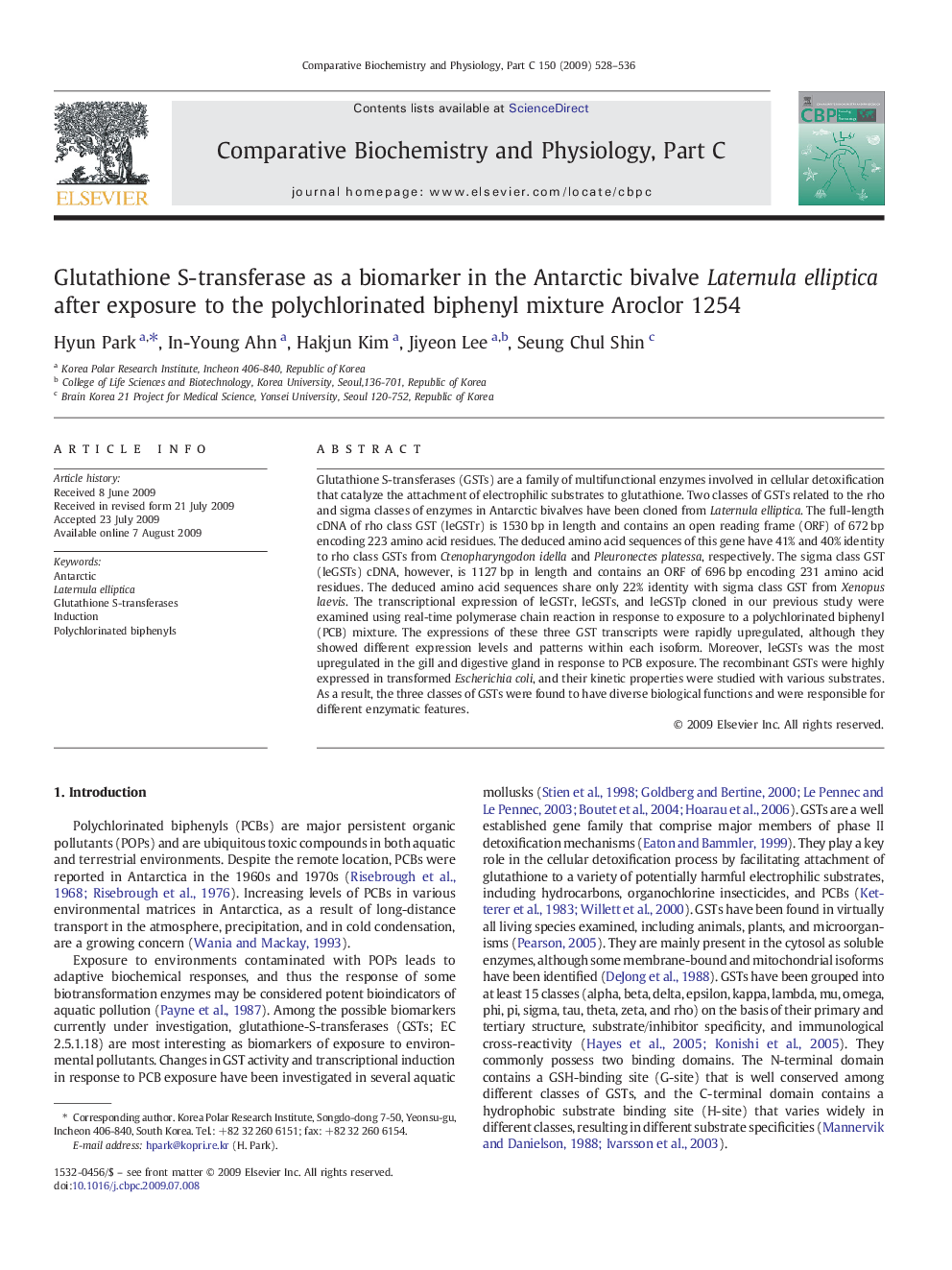| کد مقاله | کد نشریه | سال انتشار | مقاله انگلیسی | نسخه تمام متن |
|---|---|---|---|---|
| 1977726 | 1539299 | 2009 | 9 صفحه PDF | دانلود رایگان |

Glutathione S-transferases (GSTs) are a family of multifunctional enzymes involved in cellular detoxification that catalyze the attachment of electrophilic substrates to glutathione. Two classes of GSTs related to the rho and sigma classes of enzymes in Antarctic bivalves have been cloned from Laternula elliptica. The full-length cDNA of rho class GST (leGSTr) is 1530 bp in length and contains an open reading frame (ORF) of 672 bp encoding 223 amino acid residues. The deduced amino acid sequences of this gene have 41% and 40% identity to rho class GSTs from Ctenopharyngodon idella and Pleuronectes platessa, respectively. The sigma class GST (leGSTs) cDNA, however, is 1127 bp in length and contains an ORF of 696 bp encoding 231 amino acid residues. The deduced amino acid sequences share only 22% identity with sigma class GST from Xenopus laevis. The transcriptional expression of leGSTr, leGSTs, and leGSTp cloned in our previous study were examined using real-time polymerase chain reaction in response to exposure to a polychlorinated biphenyl (PCB) mixture. The expressions of these three GST transcripts were rapidly upregulated, although they showed different expression levels and patterns within each isoform. Moreover, leGSTs was the most upregulated in the gill and digestive gland in response to PCB exposure. The recombinant GSTs were highly expressed in transformed Escherichia coli, and their kinetic properties were studied with various substrates. As a result, the three classes of GSTs were found to have diverse biological functions and were responsible for different enzymatic features.
Journal: Comparative Biochemistry and Physiology Part C: Toxicology & Pharmacology - Volume 150, Issue 4, November 2009, Pages 528–536